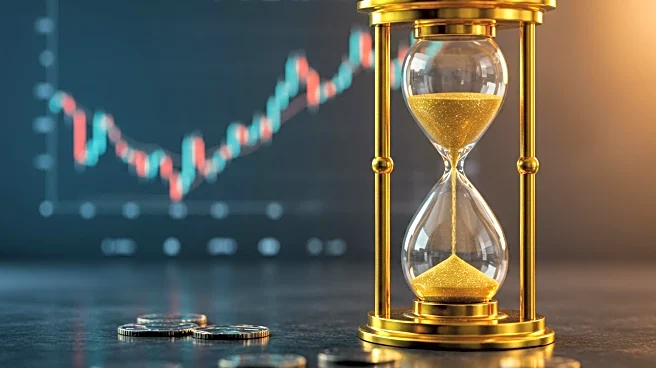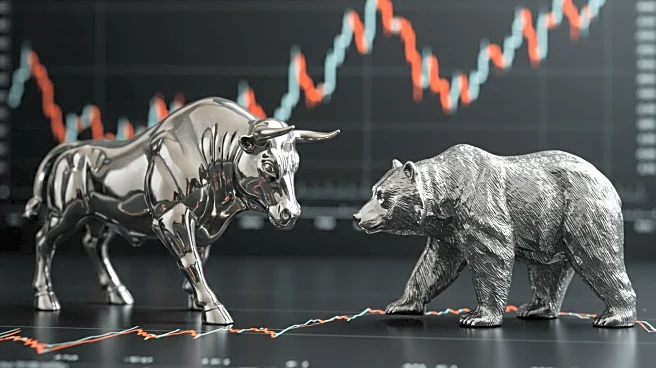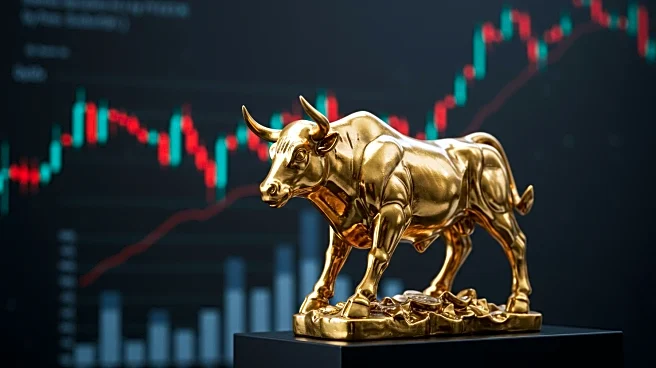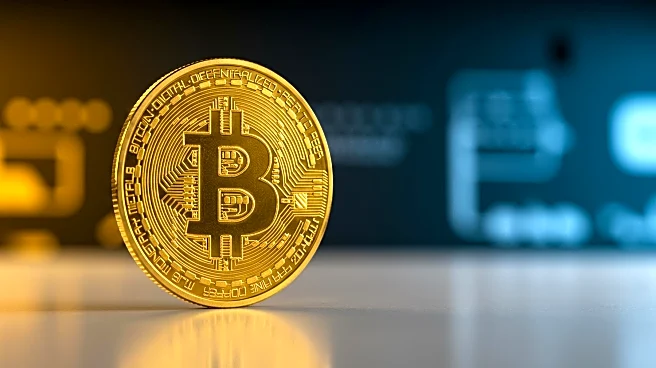What's Happening?
Gold futures have entered a consolidation phase after reaching all-time highs earlier in the year. Prices have fluctuated within a $250 trading range, influenced by recent bearish headlines and economic data. The decline in gold prices followed U.S. inflation data that lowered expectations for a significant interest rate cut. Despite this sell-off, gold remains a preferred hedge against economic decline and rising inflation. Analysts forecast a benchmark target of $3,600 per ounce for December Comex Gold Futures by the end of 2025, with potential for further gains if economic conditions worsen.
Why It's Important?
The evolving strategies in gold trading reflect broader economic uncertainties and investor sentiment. As gold is considered a safe-haven asset, its performance can indicate market confidence and economic health. The consolidation phase suggests cautious optimism among traders, balancing potential gains against risks of further economic deterioration. This situation underscores the importance of gold in diversified investment portfolios, particularly amid stagflationary pressures. The market's response to geopolitical developments and inflation trends will be crucial in determining future price movements.
What's Next?
Traders are focusing on key support and resistance levels to navigate the current market conditions. A breakout above $3,450 could lead to further price increases, while seasonal factors and interest rate expectations may influence future trends. As the year progresses, renewed interest rate cut expectations in 2026 could bolster gold prices. Investors are encouraged to explore new trading opportunities, such as 1-ounce futures contracts, to capitalize on potential market shifts. Monitoring economic indicators and geopolitical developments will be essential for informed trading decisions.











